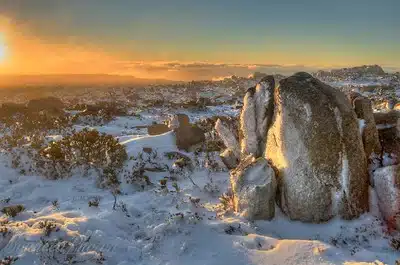Discover the Remarkable Results of Snow in Australia on Regional Ecological Communities
Regardless of its credibility for sun-soaked landscapes, Australia additionally boasts areas blanketed by snow-- a phenomenon that exceptionally influences the country's one-of-a-kind communities. The protecting residential properties of snows protect flora and animals amidst the chilliest winter seasons, while the melting snow nurtures rivers and water life. The real marvel lies in just how these wintry problems shape the nation's biodiversity and nutrient cycles. As we unravel this detailed connection, we discover ourselves stepping on uncharted premises in Australia's high country.
The Unanticipated Areas of Snowfall in Australia
Although Australia is typically related to sandy beaches and sun-scorched landscapes, specific areas remarkably experience snowfall. The high nation regions of New South Wales, Victoria, and Tasmania are particularly known for their winter months snow. The Snowy Hills in NSW, for circumstances, obtain plentiful seasonal snow, using a raw contrast to the country's normal warm, dry climate. The Victorian Alps and components of Tasmania also see annual snowfalls, transforming the landscape into a wintertime heaven. These areas are not simply anomalies however important parts of Australia's diverse climate system. The existence of snow in these regions considerably influences regional environments, consequently affecting the nation's unique biodiversity. However, the specific effect on Australia's distinct vegetation will be gone over in the next area.

How Snow Impacts Australia's Distinct Flora
While it may seem unusual, snowfall in Australia plays a vital function in forming the country's one-of-a-kind vegetation. The snow-filled winters foster strength in Australian plant types. This is specifically obvious in the towering and sub-alpine areas, where snow gums and hill plum-pines prosper. These plants have progressed to survive in extreme problems, with snow acting as a safety covering from freezing temperature levels and severe winds. The snow likewise adds to the dampness web content of the dirt, offering needed hydration for plant during the completely dry summertime. Basically, the snow influences the timing of blooming and seed dispersal, the growth prices, and the survival of many plant varieties, showcasing the complex interplay in between environment and flora in Australia.

The Adjustments of Australian Fauna to Snowfall
Just as Australia's vegetation has actually adapted to the wintery problems, the neighborhood fauna also, display amazing adaptations to the snowfall. Variety like the Hill Pygmy-possum, the only Australian marsupial understood to hibernate, have progressed techniques to survive in snowy settings. It utilizes the snow as insulation, hibernating in rock holes underneath the snow to remain cozy. Similarly, the Snow Skink, a varieties of reptile, alters recommended you read its colour you could try here to white during wintertime, offering camouflage against predators. Birds such as the Snowy Mountains' Crimson Rosella additionally change their diet plans to eat offered food sources during colder periods. Thus, in spite of the severe problems, Australian animals shows a adaptive and durable nature, ensuring their survival in regions experiencing snowfall.
The Duty of Snow in Shaping Local Ecological Communities
Fit the local environments, the duty of snow in Australia is both multilayered and profound. It influences the circulation of plants and fauna, mainly defining the biodiversity of sub-alpine and alpine regions. Snow supplies a crucial water resource, feeding rivers and tanks as it melts, therefore sustaining a variety of aquatic life types. In addition, snow serves as an insulator, protecting ground-dwelling organisms from extreme cold. It plays a significant role in soil development and nutrient cycling. The periodic freezing and thawing of dirt induced by snowfall fosters the break down of rocks, enhancing soil fertility. The visibility of snow forms the vegetation patterns, pet behavior, and total sustainability of Australia's unique environments.

The Future of Snowfall in Australia: Predictions and Effects

Offered the important function snow plays in shaping neighborhood ecosystems, the future of snowfall in Australia is attracting raising interest from scientists and ecologists. Much less snow can result in decreased water schedule in alpine areas, adversely influencing wildlife habitats and plant life. The tourism market, greatly reliant on the winter snow period, might also deal with significant challenges.
Final Thought
The function of snow in Australia's ecological communities is critical yet frequently neglected. Hence, the snow in Australia is much more than a natural phenomenon; it's an essential gamer in the nation's ecological narrative.
Despite its credibility for sun-soaked landscapes, Australia additionally boasts areas buried by snow-- a phenomenon that exceptionally affects the nation's special communities. It utilizes the snow as insulation, hibernating in rock crevices under the snow to remain warm - Does Australia Get Snow.In shaping the local communities, the duty of snow in Australia is both profound and multilayered. The visibility of snow shapes the greenery patterns, pet behavior, and overall sustainability of Australia's unique ecological communities
Offered the crucial role snow plays in forming local ecological communities, the future of snowfall in Australia is Discover More Here drawing increasing focus from ecologists and scientists.